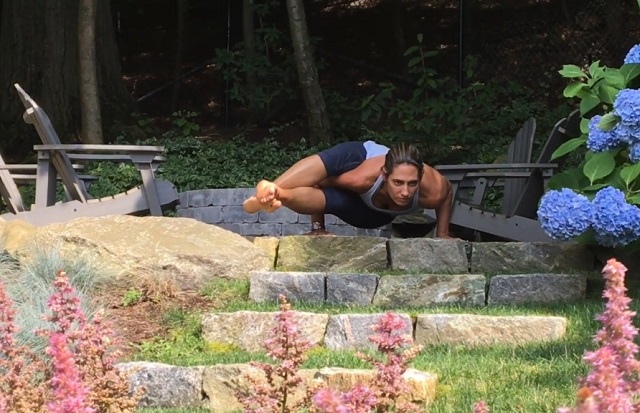
I’ve been a yoga instructor for 14 years. Along the way, I have become a wife and a mother, which by default has also made me, at times, a personal chef, arts and crafts expert, tech support, laundry extraordinaire, emergency hair and makeup artist, personal assistant, and chauffeur.
What this time has also taught me is the gift of being more present in my life. I am better able to connect with the current moment, and when I do that, inspiration often appears.
I use that inspiration as a theme for my classes. Often the physical poses and the mental practice weave together and sometimes that inspiration finds its way into a written piece.
A couple of weeks ago, I listened to a seven-part podcast series called “S-Town,” created by the producers of “Serial” and “This American Life.” The story itself is interesting and quite dark, but there was a theme woven through it that inspired me.
It was the idea that time is always moving, measured, and tracked, but cannot be stopped—that we have a choice about what we are going to do with our hours.
Are we going to count them or live in them?
The main character in the podcast is a brilliant but eccentric antique clock restorer. The concept of time fascinates him. He builds clocks and sundials and is obsessed with the passage of time and time being wasted. He talks about how sundials often have inscriptions on them, and shares an inscription that stood out to him:
“Take the gifts of this hour.”
So during my class, I asked my students to do just that—to take the gifts of our hour together (well, 75 minutes actually) and explore how each yoga pose offers something new to the body, and how the practice itself offers gifts for the mind.
As we warmed up and moved into our first Downward Dog, I once again offered the practice of taking gifts. I shared that by engaging the belly, the spine can lengthen more, and that by externally rotating the shoulders, we are strengthening the rotator cuffs. Also, when pressing through the heels, we get a deeper stretch in the back of the legs.
Connecting to these opportunities is the difference between just being in Downward Dog and “taking the gifts” of Downward Dog.
As we moved through our asana practice, we found opportunities to explore and take in even more gifts, like the chance to rest for an extra moment in Child’s Pose and find space, strength, and flexibility not just in the body but in the mind as well. We slowly progressed toward exploring some deep binds, and then later we played with transitioning between two advanced poses, Eight-Angle Pose and one-legged Sage Koundinya’s Pose. It was an opportunity to live fully in the moment, to laugh and enjoy and try something new.
When we live that way it becomes more about the journey and less about the destination.
As we began to slow the practice down, we spent several breaths in Pigeon Pose, and I shared how “taking the gifts of the hour” can translate off the mat. The main character in the podcast had calculated that if a person lives for 68 years (hopefully we all live longer than that) that is roughly 25,000 days. Of those days, 20-30 percent of that time is spent sleeping, and another large percentage is used to complete the tasks we need to do in our lives. Therefore, in his calculation, that leaves a person about 4,500 days, or 108,000 hours, to pursue what truly matters to them—to take all the gifts that are offered to them.
As our hour together came to a close, we sat together in a moment of seated meditation. I thanked my students for giving me the gift of their time.
I wished for them the same thing I wish for all of us: the chance to continue their practice and “take the gifts” of all their hours—both on and off the mat.
Namaste.
~
~
Author: Allison Waguespack
Image: Author’s own; Audrey Reid
Editor: Nicole Cameron
Copy Editor: Catherine Monkman
Social Editor: Catherine Monkman











Read 35 comments and reply